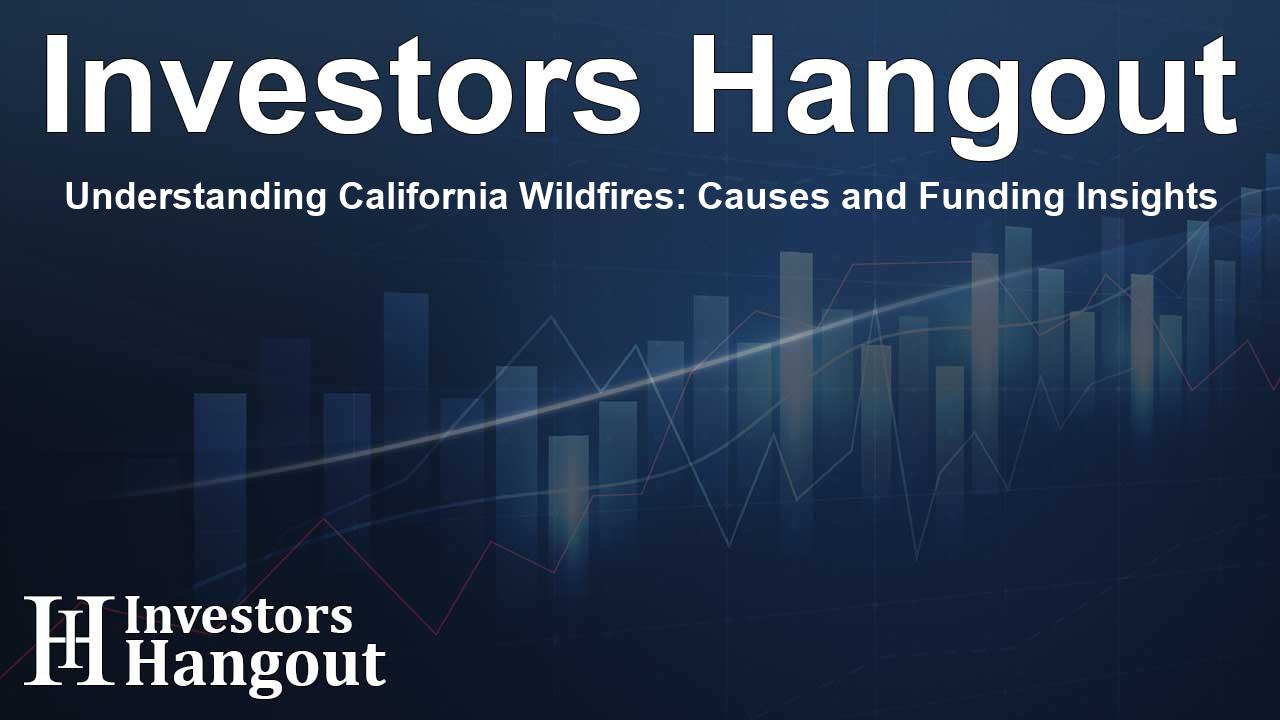Understanding California Wildfires: Causes and Funding Insights

California Wildfires: An Overview of Causes and Funding
The devastating impact of wildfires in California has become a pressing issue, prompting a thorough examination of the causes and the financial structures in place to combat such disasters. In light of recent incidents, experts are working diligently to analyze these factors to better protect communities.
Expert Analysis on Wildfire Causes
Recent discussions have highlighted insights from analysts who have delved into various ignition sources that lead to wildfires. In particular, experts investigated a notable fire incident in Southern California, focusing on the role of utility services in fire management. Their research primarily surveyed the operational failures and risks posed by utility infrastructure.
Utility Infrastructure and Fire Risk
Research indicates that there has been no substantial evidence of significant faults from transmission lines linked to the recent fires. This observation coincides with preliminary findings from major energy companies, reinforcing the need for further scrutiny of how distribution lines might contribute to such incidents.
The Role of Wildfire Funding in Management
One significant aspect of fire management in California revolves around the funding mechanisms established to support wildfire response efforts. The state's funding framework is comprised of systems designed to facilitate immediate responses and long-term recovery. Notably, the Wildfire Fund, a financial reservoir estimated to reach $27 billion by 2036, plays a critical role in these efforts.
Funding Mechanism Under Assembly Bill 1054
Governed by Assembly Bill 1054, this funding mechanism is crafted to manage the financial implications of wildfire incidents effectively. Utilities can access reimbursements from the Wildfire Fund contingent upon their operational prudence and adherence to safety standards.
Challenges in Wildfire Mitigation Policies
One of the challenges currently faced is the inconsistent application of wildfire mitigation strategies across different utility providers. Publicly owned utilities and investor-owned utilities often have varied approaches, leading to uneven preparedness levels in high-risk fire zones.
Uniformity in Mitigation Efforts
Analysts have pointed out the critical need for standardized mitigation policies to ensure comprehensive fire safety. The disparity in practices among utilities can lead to vulnerabilities that put communities at risk. Addressing these inconsistencies is deemed essential for enhancing overall safety measures.
Future Directions for California's Wildfire Strategy
Considering the ongoing challenges associated with wildfires, it is imperative for policymakers and utility companies to collaborate on creating effective strategies. These initiatives should encompass a uniform approach to power shutoff policies, simulation of potential scenarios, and robust community engagement.
Community Engagement and Awareness
Engaging local communities in wildfire preparedness and response strategies can significantly enhance overall safety. Public awareness campaigns that educate citizens about risks and preventive measures play a vital role in fostering resilience against wildfires.
Frequently Asked Questions
What are the main causes of California wildfires?
The primary causes often include natural conditions like droughts and high winds, along with human activities associated with utility infrastructure failures.
How does the wildfire funding mechanism work?
The funding is regulated by Assembly Bill 1054, which ensures that utilities can receive reimbursements for prudent wildfire management actions.
What role do utilities play in wildfire incidents?
Utilities can be involved in fires through their infrastructure, where failures in transmission or distribution lines may ignite wildfires.
Why is there inconsistency in wildfire policies among utilities?
The inconsistency stems from differing regulations and operational practices between publicly owned utilities and investor-owned entities, leading to vulnerabilities.
What steps can communities take to prepare for wildfires?
Communities can enhance preparedness by engaging in education programs, developing emergency plans, and participating in fire safety drills.
About The Author
Contact Evelyn Baker privately here. Or send an email with ATTN: Evelyn Baker as the subject to contact@investorshangout.com.
About Investors Hangout
Investors Hangout is a leading online stock forum for financial discussion and learning, offering a wide range of free tools and resources. It draws in traders of all levels, who exchange market knowledge, investigate trading tactics, and keep an eye on industry developments in real time. Featuring financial articles, stock message boards, quotes, charts, company profiles, and live news updates. Through cooperative learning and a wealth of informational resources, it helps users from novices creating their first portfolios to experts honing their techniques. Join Investors Hangout today: https://investorshangout.com/
The content of this article is based on factual, publicly available information and does not represent legal, financial, or investment advice. Investors Hangout does not offer financial advice, and the author is not a licensed financial advisor. Consult a qualified advisor before making any financial or investment decisions based on this article. This article should not be considered advice to purchase, sell, or hold any securities or other investments. If any of the material provided here is inaccurate, please contact us for corrections.
